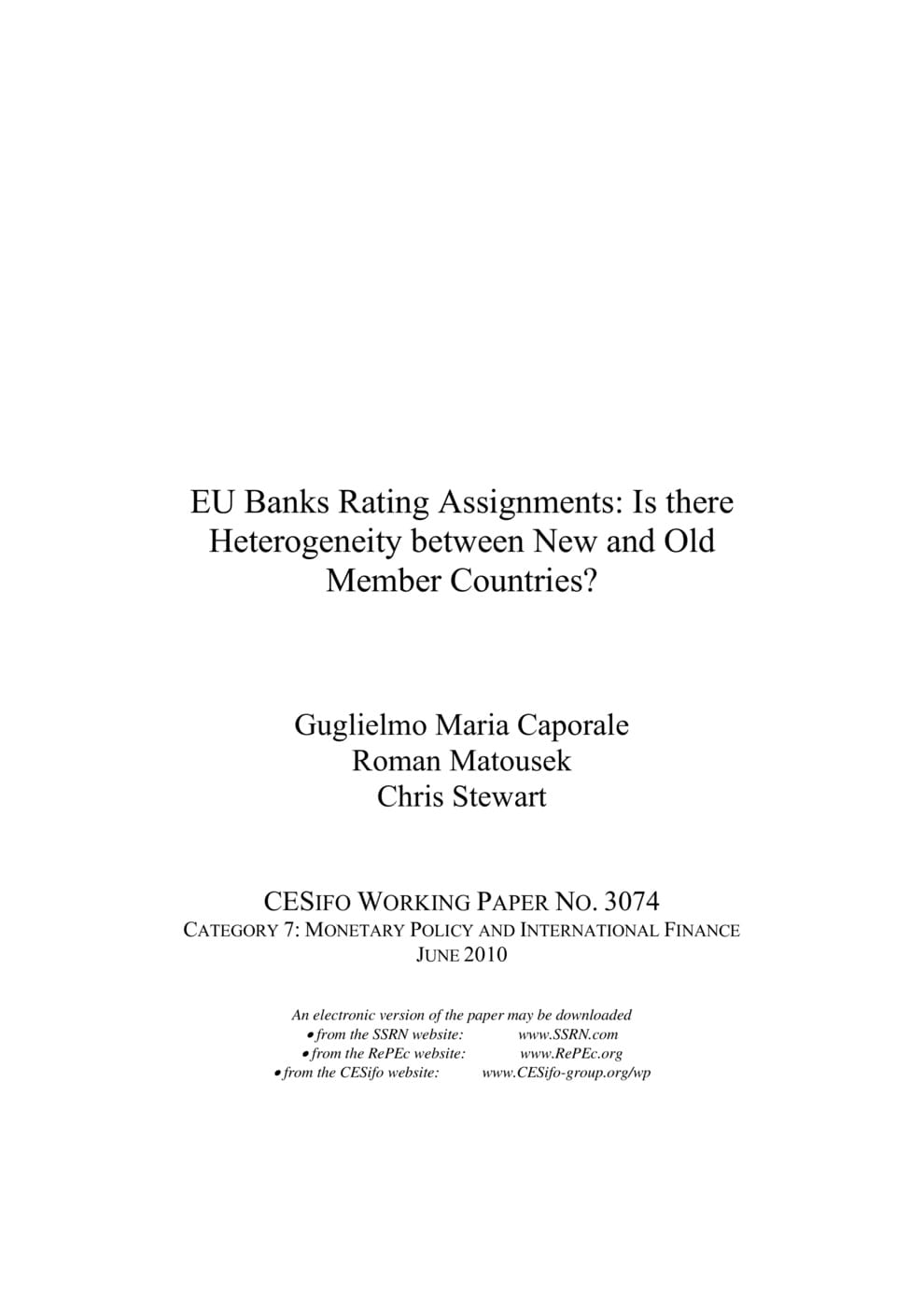EU Banks Rating Assignments: Is there Heterogeneity between New and Old Member Countries?
CESifo, Munich, 2010
CESifo Working Paper No. 3074

We model EU countries’ bank ratings using financial variables and allowing for intercept and slope heterogeneity. Our aim is to assess whether “old” and “new” EU countries are rated differently and to determine whether “new” ones are assigned lower ratings, ceteris paribus, than “old” ones. We find that country-specific factors (in the form of heterogeneous intercepts) are a crucial determinant of ratings. Whilst “new” EU countries typically have lower ratings than “old” ones, after controlling for financial variables we also discover that all countries have significantly different intercepts, confirming our prior belief. This intercept heterogeneity suggests that each country’s rating is assigned uniquely, after controlling for differences in financial factors, which may reflect differences in country risk and the legal and regulatory framework that banks face (such as foreclosure laws). In addition, we find that ratings may respond differently to the liquidity and operating expenses to operating income variables across countries. Typically ratings are more responsive to the former and less sensitive to the latter for “new” EU countries compared with “old” EU countries.
Monetary Policy and International Finance